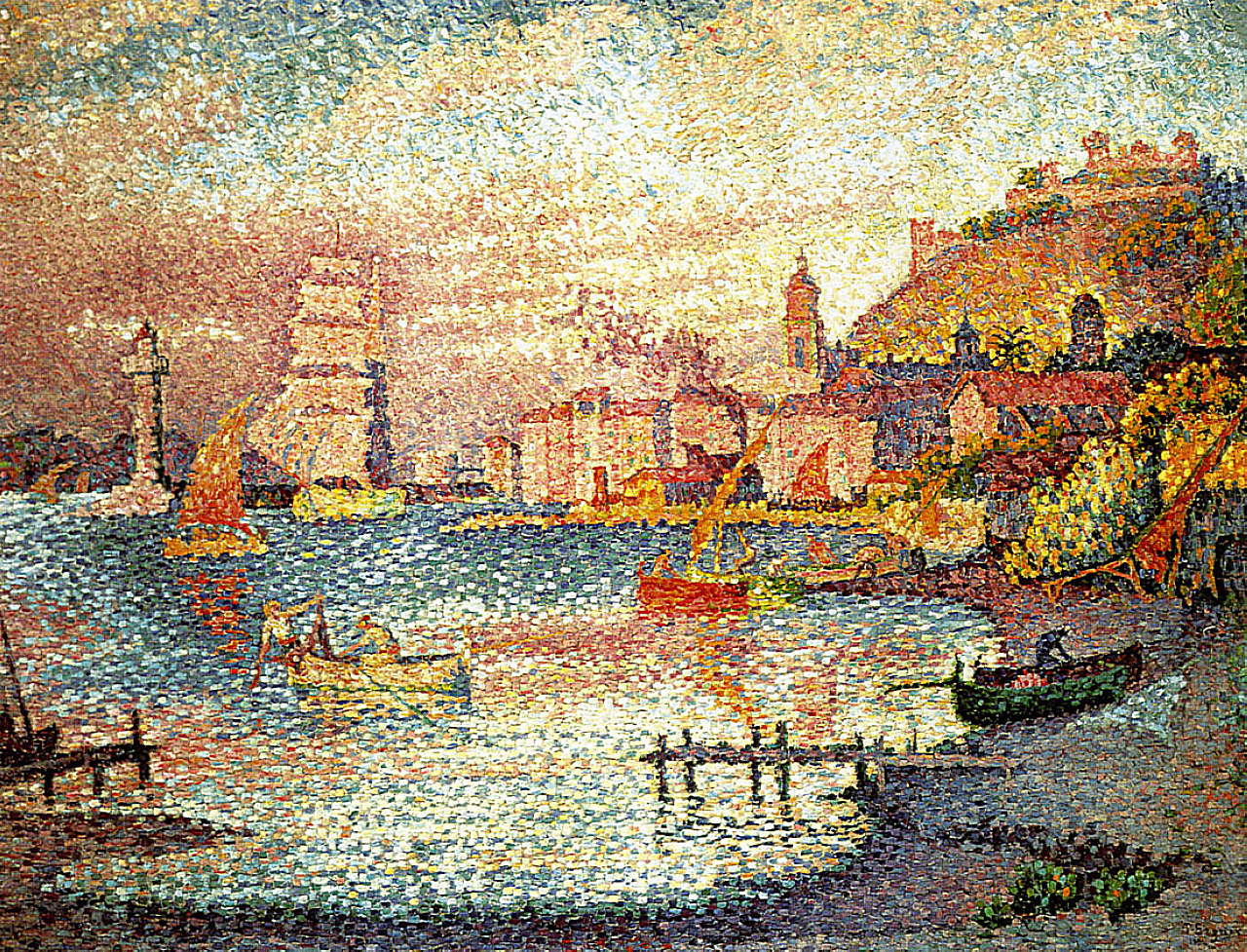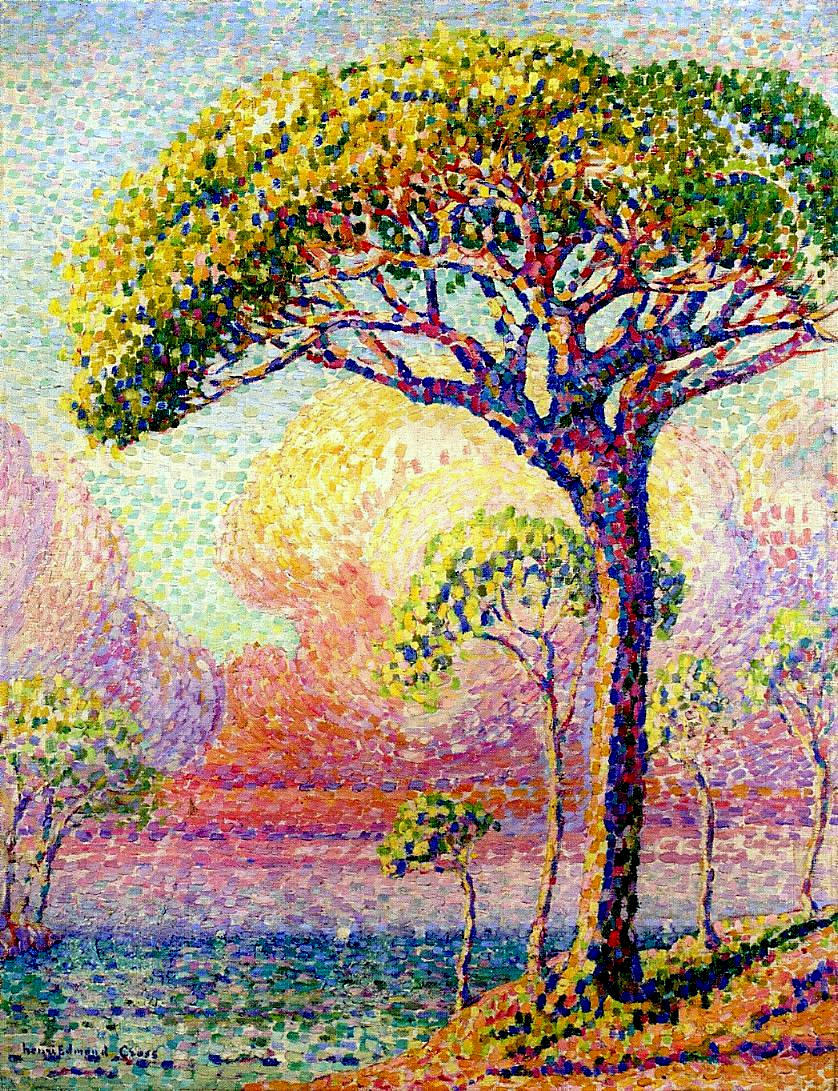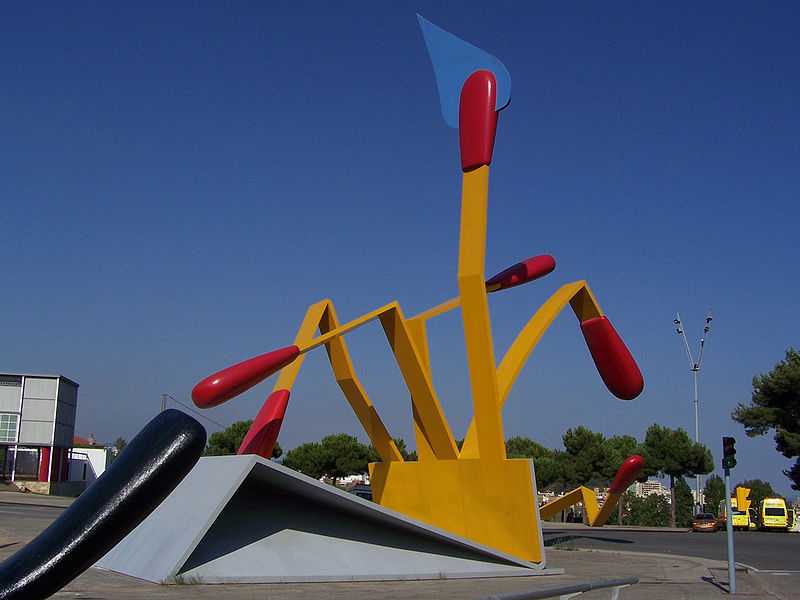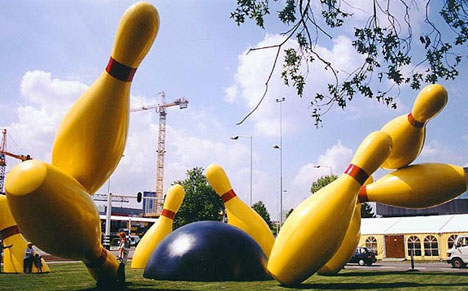Pointillism is a technique of painting in which small dots of colour are applied in patterns to form an image. The term "Pointillism" was first coined by art critics in the late 1880s to ridicule the works of these artists, and is now used without its earlier more negative connotations. The most important thing for them was to focus on the specific style
of brushwork used to apply the paint.
The practice of Pointillism is in sharp contrast to the traditional methods of blending pigments on a palette. It is analogous to the four-colour CMYK printing process used by some colour printers and large presses that place dots of Cyan (blue), Magenta (red), Yellow, and Key (black). Televisions and computer monitors use a similar technique to represent image colours using Red, Green and Blue colours.(RGB)
The term "Pointillism" was first used with respect to the work of Georges Seurat, and he is the artist most closely associated with the movement. The relatively few artists who worked in this style also included Paul Signac and Henri-Edmond Cross.
Notable paintings:
"A Sunday afternoon on the Island of La Grande Jatte" by Georges Seurat
(1884-6, Chicago)
"Bathing at Asnieres" by Georges Seurat
(1883-4) National Gallery, London

"The Papal Palace, Avignon" by Paul Signac (1900) Musée d'Orsay, Paris, France
"The Port of Saint-Tropez" by Paul Signac
(1901) The National Museum of Western Art, Tokyo

"Portrait of madame Cross" by Henri-Edmond Cross
(1891-1892) Musée D'Orsay, Paris, France
"A pine tree" by Henri-Edmond Cross
(1905) Private Collection













